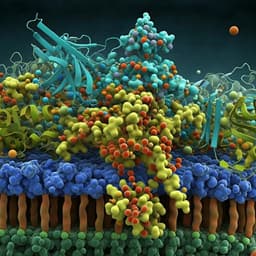
Chemistry
Chemical profiling of DNA G-quadruplex-interacting proteins in live cells
X. Zhang, J. Spiegel, et al.
Discover a groundbreaking co-binding-mediated protein profiling (CMPP) strategy developed by a talented team including Xiaoyun Zhang, Jochen Spiegel, Sergio Martínez Cuesta, Santosh Adhikari, and Shankar Balasubramanian. This innovative approach unveils proteins that interact with DNA G-quadruplexes in live cells, potentially leading to new insights in cellular function and disease mechanisms.
Playback language: English
Related Publications
Explore these studies to deepen your understanding of the subject.







